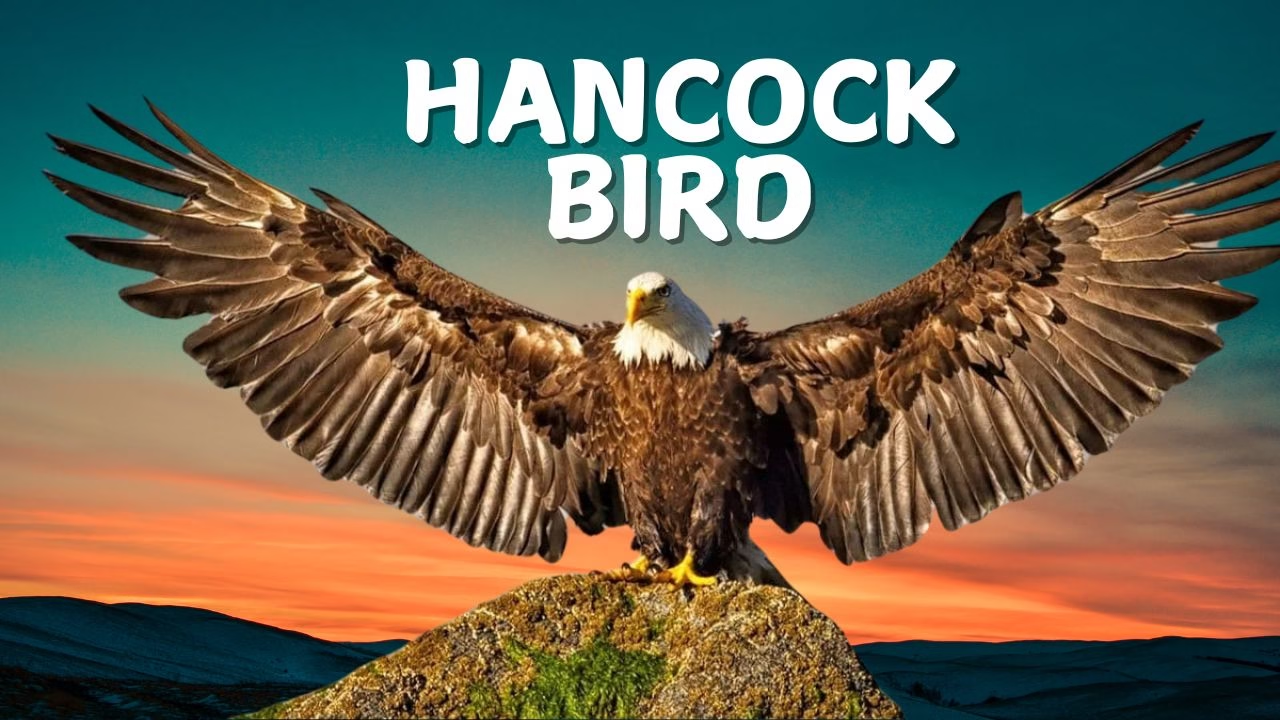Hancock Bird: Symbolism, Origins & Cultural Impact

Few birds capture the human imagination as powerfully as the Hancock Bird. Equal parts biological marvel and cultural symbol, this bird has inspired centuries of awe, storytelling, and scientific curiosity. With its vibrant plumage, melodic calls, and adaptable nature, the Hancock Bird fascinates not only birdwatchers but also artists, conservationists, and historians. More than a bird, it represents a harmonious bridge between culture and nature, offering lessons on resilience, transformation, and unity.
This guide dives deep into the Hancock Bird’s biology, behavior, significance in human culture, and ongoing conservation efforts. Whether you’re a seasoned nature lover or simply curious about this enigmatic creature, you’ll uncover why this bird continues to capture global interest.
What Is the Hancock Bird?
The term “Hancock Bird” may refer to an actual bird species known for its unique physical traits or a symbolic figure embedded in myths and culture. While its classification varies regionally, the species is generally linked to the family Corvidae, which includes crows, ravens, and jays. These birds are known for their intelligence, adaptability, and striking vocalizations.
Scientific Classification:
- Kingdom: Animalia
- Phylum: Chordata
- Class: Aves
- Order: Passeriformes
- Family: Corvidae
Whether perceived as a biological species or as a folkloric entity, the Hancock Bird has earned a place in both natural history and cultural imagination.
Physical Characteristics of the Hancock Bird
Explore the striking beauty of this bird and its melodious contributions to the ecosystem.
Size and Appearance
The Hancock Bird is medium to large in size, with a robust body and strong, pointed wings. It often features iridescent plumage that ranges from deep blacks to metallic blues and greens, making it a spectacle in sunlight.
Vocalizations
Renowned for its complex calls, the Hancock Bird uses its vocal ability for communication, territorial defense, and attracting mates. These birds create melodic sounds that can range from chirps to intricate songs, adding beauty to their natural environments.
Habitat and Geographic Distribution
Discover the diverse environments where the Hancock Bird makes its home.
Preferred Habitats
Highly adaptable, Hancock Birds thrive across a range of ecosystems:
- Dense Forests: Offer ample shelter and foraging opportunities.
- Urban Areas: Utilize human environments by scavenging and nesting in trees or on rooftops.
- Wetlands: Forage for aquatic plants and insects.
Global Range
The Hancock Bird’s geographic distribution spans across North America, parts of Europe, and Asia. Seasonal migrations are common, with some populations moving to milder climates during winter months.
Behavior and Social Dynamics
Uncover the complexities of its diet, group behavior, and courtship rituals.
Feeding Habits
Hancock Birds are omnivores, relying on diverse food sources, including:
- Fruits, nuts, and seeds for sustained nutrition.
- Small animals and insects, particularly during breeding seasons.
- Scavenged food in urban environments.
Social Structure
Living in flocks, these birds exhibit complex social hierarchies. The group dynamic ensures protection from predators and efficient food foraging. They communicate using a range of vocalizations and body language. Dominance is often established through subtle interactions and displays.
Mating Rituals
Courtship involves aerial acrobatics and musical displays. Nests are usually built in trees, where the female incubates the eggs while the male brings food.Pairs often form strong bonds and may mate for several seasons. Males may also offer food gifts during courtship to strengthen pair bonds.
The Symbolism and Cultural Significance of the Hancock Bird
Across many cultures, the Hancock Bird is regarded as a symbol of wisdom, freedom, and transformation. It has appeared throughout history in folklore and legends, often embodying the role of a guide or moral teacher.
Representation in Myths
Some cultures view the bird as a spiritual ally, representing renewal and protection, while others associate it with freedom and boundless exploration.
Role in Art and Literature
When it comes to creativity and storytelling, the Hancock Bird has quietly made its mark across generations. Though it’s not a real, classified species, that hasn’t stopped it from finding a home in the worlds of both art and literature—and honestly, that’s where its magic really shines.
Literature
Writers often turn to the Hancock Bird when they want to express big, universal emotions—think freedom, loyalty, love, and even the fleeting nature of life. This bird becomes more than just a symbol; it transforms into a metaphor for journeys, endings, and personal awakenings.
Whether it’s in ancient folklore or modern poetry, the Hancock Bird carries the weight of deeply human experiences, giving readers something they can feel in their hearts. You’ll often see it appear in stories that explore transformation or rebirth and times when characters are going through change or chasing something greater than themselves.
The Hancock Bird reminds readers that growth often comes with letting go and learning to fly toward something new.
Art
Visually, the Hancock Bird is just as powerful. From vibrant paintings to delicate sculptures, artists use its image to communicate everything from hope and grace to mystery and inner strength. Its form—whether mid-flight or perched in thought—adds movement and emotion to a canvas.
You might even notice Hancock Bird-inspired elements in modern design—murals, tattoos, digital artwork, and home décor. It’s subtle, but when used right, it instantly grabs attention and stirs emotion. That’s because this bird isn’t just something you look at—it’s something you feel.
Modern Interpretations and Pop Culture
The Hancock Bird might have roots in folklore and symbolism, but its meaning has only grown richer in today’s world. In fact, it’s more than just a mythical creature now—it’s a symbol that speaks to modern values, personal journeys, and spiritual exploration.
Pop Culture
The Hancock Bird has also made its way into the spotlight through pop culture. You’ll find its presence in films, books, fashion, and even digital media, where it often represents deeper messages—things like freedom, resilience, or the search for truth in a noisy world.
Personal Emblems
For many, the Hancock Bird has become a personal emblem—a way to express something unique about their own life or beliefs. It shows up in tattoos, jewelry, and visual art as a representation of individual growth, purpose, or transformation.
The Hancock Bird in Conservation Efforts
Learn about the challenges and efforts to protect this bird’s survival.
Current Threats
Despite its adaptability, Hancock Bird populations face growing challenges:
- Habitat Destruction: Urban expansion and deforestation disrupt nesting grounds.
- Climate Change: Shifting weather patterns interfere with migration and breeding cycles.
- Pollution: Contaminated food sources can severely impact their health.
Organizations Making a Difference
Conservation groups like the Hancock Wildlife Foundation (HWF) play an active role in safeguarding the bird’s habitat. HWF educates the public and encourages global action by employing live-streamed cameras and breeding programs.
Broader Ecological Impact
The Hancock Bird’s survival reflects the health of broader ecosystems. Protecting its habitat benefits many plant and animal species, thereby preserving biodiversity.
How to Spot a Hancock Bird?
Get practical tips for observing this enchanting bird in its natural surroundings.
Where to Look
Natural reserves, parks, and wetlands are ideal for observing these creatures. Urban green spaces are also popular Hancock Bird haunts.
When to Watch
Early mornings and late afternoons are the best times to catch these birds in action, as they are most active during these hours.
Tools for Birdwatchers
- Binoculars: Look for a pair with 8x magnification for clarity.
- Field Guides: Use a guidebook to identify species by sight and sound.
- Notebook or App: Record observations for personal or community use.
The Hancock Bird as a Modern Icon
Today, the Hancock Bird continues to inspire modern art, fashion, and environmental awareness. From its vivid presence in graphic designs to personalized pendants and home decor, the bird reflects universal themes of beauty, individuality, and harmony with nature.
Fashion and Design
Hancock-inspired motifs appear in fashion, often blending traditional Aboriginal art with contemporary designs. The bird’s imagery symbolizes elegance and resilience.
A Symbol of Conservation
More than just an aesthetic influence, the Hancock Bird serves as a reminder of the urgent need for ecological mindfulness and collaborative conservation.
Final Thoughts
The Hancock Bird is more than a fascinating creature of nature; it is a bridge between our past and future. From its symbolic wisdom in ancient myths to its current role as a conservation icon, this bird emphasizes the interconnectedness of all life.
By protecting the environments these birds inhabit, we not only ensure their survival but also preserve the beauty and balance of our world. Take time to discover the Hancock Bird in the wilderness, and in doing so, foster your connection to nature’s enduring magic.
For more info, Stay tuned with locationtrap.com





